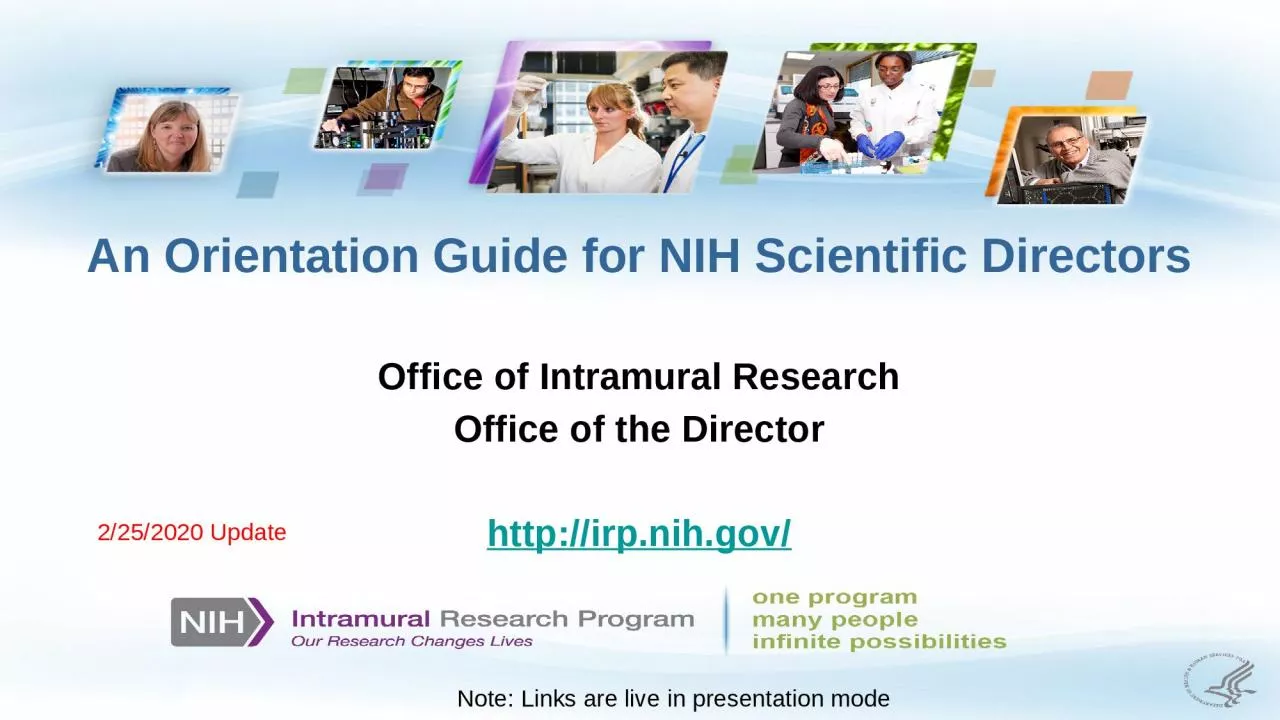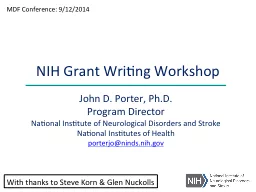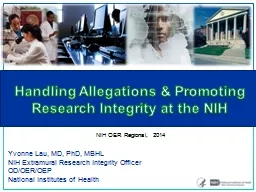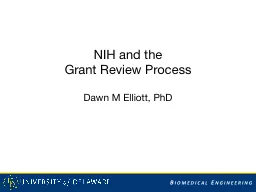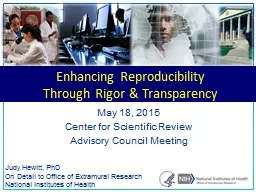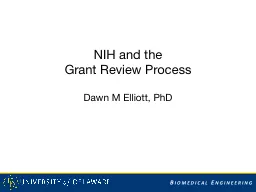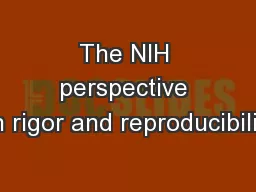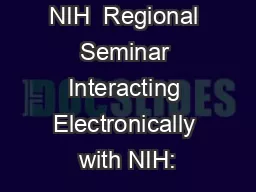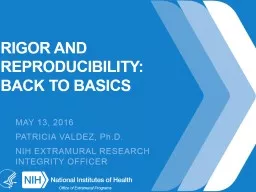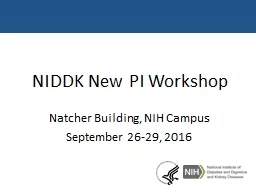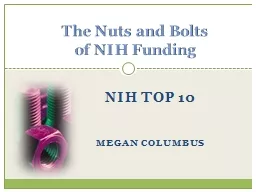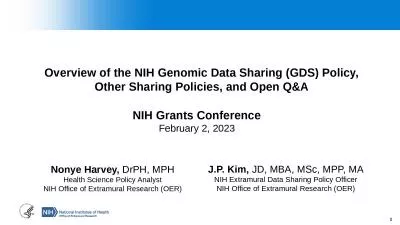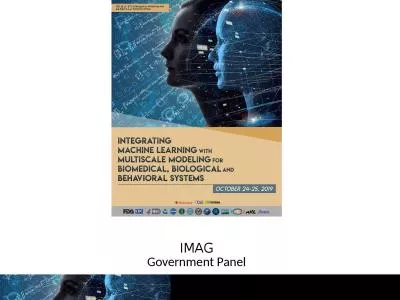PPT-An Orientation Guide for NIH Scientific Directors
Author : bella | Published Date : 2024-01-29
Office of Intramural Research Office of the Director httpirpnihgov Note Links are live in presentation mode 2252020 Update Outline Overview of NIH and the Intramural
Presentation Embed Code
Download Presentation
Download Presentation The PPT/PDF document "An Orientation Guide for NIH Scientific ..." is the property of its rightful owner. Permission is granted to download and print the materials on this website for personal, non-commercial use only, and to display it on your personal computer provided you do not modify the materials and that you retain all copyright notices contained in the materials. By downloading content from our website, you accept the terms of this agreement.
An Orientation Guide for NIH Scientific Directors: Transcript
Download Rules Of Document
"An Orientation Guide for NIH Scientific Directors"The content belongs to its owner. You may download and print it for personal use, without modification, and keep all copyright notices. By downloading, you agree to these terms.
Related Documents

